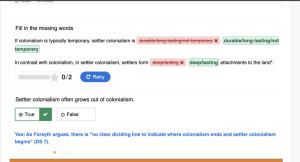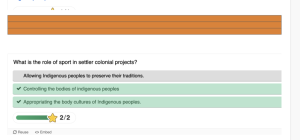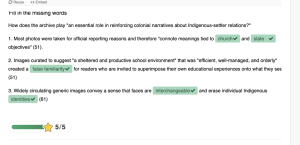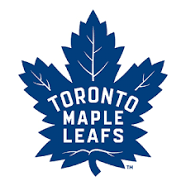4
These are difficult stories. We bear witness in this chapter to the role of sport in furthering the settler colonial projects throughout Turtle Island. Here are some supports to access in the community and from a distance:
First Peoples House of Learning Cultural Support & Counselling
Niijkiwendidaa Anishnaabekwag Services Circle (Counselling & Healing Services for Indigenous Women & their Families) – 1-800-663-2696
Nogojiwanong Friendship Centre (705) 775-0387
Peterborough Community Counselling Resource Centre: (705) 742-4258
Hope for Wellness – Indigenous help line (online chat also available) – 1-855-242-3310
LGBT Youthline: askus@youthline.ca or text (647)694-4275
National Indian Residential School Crisis Line – 1-866-925-4419
Talk4Healing (a culturally-grounded helpline for Indigenous women):1-855-5544-HEAL
Section One: History
A) The Residential School System
Exercise 1: Notebook Prompt
We are asked to honour these stories with open hearts and open minds.
Which part of the chapter stood out to you? What were your feelings as you read it? (50 words)
| Sports as Medicine was one part of the chapter that stood out to me, particularly the video. It made me realize the true power sport holds for people and how it is a strong coping method. The stories shared by Aiden Baker, William Nahini, and others was truly inspiring. Although I could not connect to their experiences fully, it made me realize the true significance of sports and how it really is a medicine. No matter what experiences people have been through, sports can act as a medicine. For me, I use sports to have fun, get away from my problems, and cope with my challenges. I have never really thought of sports as a “medicine,” but now my perceptions have changed.
|
B) Keywords
Exercise 2: Notebook Prompt
Briefly define (point form is fine) one of the keywords in the padlet (may be one that you added yourself).
|
Settler colonialism refers to a type of colonialism in which the current occupants of a territory are displaced by settlers who claim land and build a permanent society where their privileged status is codified in law. It often involves the displacement and dispossession of Indigenous populations as well as the exploitation of resources. |
C) Settler Colonialism
Exercise 3: Complete the Activities


Exercise 4: Notebook Prompt
Although we have discussed in this module how the colonial project sought to suppress Indigenous cultures, it is important to note that it also appropriates and adapts Indigenous cultures and “body movement practices” (75) as part of a larger endeavour to “make settlers Indigenous” (75).
What does this look like? (write 2 or 3 sentences)
|
The colonial project sought to suppress Indigenous cultures, often through cultural domination and the displacement of Indigenous Peoples. However, the colonial project also appropriated and adapted Indigenous cultures, such as “body movement practices”. For instance, settlers tried implementing Indigenous body movement practices, such as traditional forms of dance, but in doing so, they stripped these practices of their original meaning. This allowed settlers to feel connected to the land and its history while ignoring the oppression and violence Indigenous Peoples faced. |
D) The Colonial Archive

Exercise 5: Complete the Activities
Section Two: Reconciliation
A) Reconciliation?
Exercise 6: Activity and Notebook Prompt
Visit the story called “The Skate” for an in-depth exploration of sport in the residential school system. At the bottom of the page you will see four questions to which you may respond by tweet, facebook message, or email:
How much freedom did you have to play as a child?
What values do we learn from different sports and games?
When residential staff took photos, what impression did they try to create?
Answer one of these questions (drawing on what you have learned in section one of this module or prior reading) and record it in your Notebook.
|
How much freedom did you have to play as a child? I had plenty of freedom to play as a child. I remember playing outside with my friends almost every day for most of the day. It was something I loved to do, and something my parents let me do. I was given lots of freedom to play and often times my parents along with my friends parents would play with us outside. After reading the witness blanket, a few ideas stood out to me. It was stated that “playing sports was also a valued privilege that could be taken away as punishment.” This allowed me to realize the amount of freedom I truly have and had when I was a child. For me, sport was encouraged, but also something that I was given the choice to participate in.
|
B) Redefining Sport
B) Sport as Medicine
Exercise 7: Notebook Prompt
Make note of the many ways sport is considered medicine by the people interviewed in this video.
| The video centers around the idea that sport is considered medicine. For the lacrosse player, Aiden Baker, sport was a major part of his life and his family’s life. His grandfather, Hugh Baker, was a residential school survivor and was in the Hall of Fame for lacrosse. For Aiden, perusing lacrosse was a way for him to continue the accomplishments of his grandfather and help navigate the hardships of residential schools. For William Nahini, a residential school survivor, sport was his medicine. When he was a child, he was forced into a residential school where he lost his childhood freedom. William loved to box, it was his medicine and a way for his to regain himself and his strength while coping with his traumatic experiences. Chief Robert Joseph was another residential school survivor in the video. Sport was described as central to progressive well-being of Indigenous People. It was fun, and expressed as the happiest moments Indigenous Peoples had in residential school. Overall, this video demonstrated the strong impact sport has on individuals, especially those who experienced major trauma as it is a form of coping and a way to regain strength. |
C) Sport For development
Exercise 7: Notebook Prompt
What does Waneek Horn-Miller mean when she says that the government is “trying but still approaching Indigenous sport development in a very colonial way”?
|
Waneek Horn-Miller shared a variety of intriguing experiences she has faced within her athletic journey. When she says that the government is “trying but still approaching Indigenous sport development in a very colonial way,” she is expressing that the governmental approaches are still positioned in a colonial way. For instance, the government is taking initiatives in regards to sports and development that are not in consideration of Indigenous communities. If the government is trying to approach Indigenous sport development, they should be involving Indigenous communities in decision making and should have them as their number one consideration. However, it is evident that the government is still approaching this development through a colonial lens that really is not allowing Indigenous communities to contribute in the shaping and development of these programs. The video stated, “Indigenous athletes in Canada face many barriers,” in order for less barriers to exist, Indigenous athletes and communities need to be prioritized and included in policy shaping and development. |
Exercise 8: Padlet Prompt
Add an image or brief comment reflecting some of “binding cultural symbols that constitute Canadian hockey discourse in Canada.” Record your responses in your Notebook as well.
|
The maple leaf is a significant cultural emblem in Canadian hockey, representing the national team, the Toronto Maple Leafs. It represents our country in a variety of ways, not just hockey, such as maple syrup and the leaf itself. It wields considerable power, reflecting Canadian greatness, identity, and pride.
|
Mini Assignment: Read the TRC’s 94 Calls to Action specific to sport again. Choose one of the Calls to Action that have been answered in full or in part and in 300 words explain the steps that have been taken to fulfill them and provide specific examples of what this looks like. Also reflect on how communities and individuals (particularly settlers) can contribute to addressing these Calls to Action.
The Truth and Reconciliation Commission’s 94 Calls to Action include various goals and programs aimed at achieving reconciliation. The 89th call to action requests that the federal government alter the Physical Activity and Sport Act to assist reconciliation by ensuring that policies promote physical activity as a vital component of health and well-being and decrease obstacles to sports participation. This includes finance, increased capability in the Canadian sport system, cultural assistance, and equal access for Indigenous Peoples. So far, steps have been taken to carry out this action. For example, the Aboriginal Sport Circle is Canada’s national advocate for Aboriginal sport, physical activity, and recreation, representing the interests of First Nations, Inuit, and Metis peoples. Since 2022, the Aboriginal Sport Circle has led a national consultation process that resulted in the formulation of the National Strategy for Indigenous Sport, Recreation, Physical Activity, and Traditional Practice, which is supported by Canadian Heritage (Sport Canada). The Aboriginal Sport Circle also led this developmental stage, which was scheduled for September 30, 2024.
Settler individuals and communities can make significant contributions to addressing these Calls to Action. For example, funding is an effective strategy that settler communities may utilize to raise awareness and advocate for Indigenous-led sports. Furthermore, settler individuals, particularly those in positions of power, can promote inclusive environments in which Indigenous Peoples and athletes can share their perspectives on what needs to be done moving ahead. Cultural humility is an important aspect of this, because settlers must be willing to learn and recognize that they do not know all about culture. Allowing Indigenous perspectives and histories to express their stories would result in more culturally secure environments. The $1.5 million investment in Indigenous sport programs to empower Winnipeg communities in 2025 is a significant step forward. This effort sought to increase access to sports and physical exercise while prioritizing culturally relevant and community-designed programs to empower Indigenous people, especially youth, women, girls, 2SLGBTQI+ individuals, and people with disabilities.
Section Three: Decolonization
Please see the major assignment for this half of the term in the final section of this chapter.



Feedback/Errata